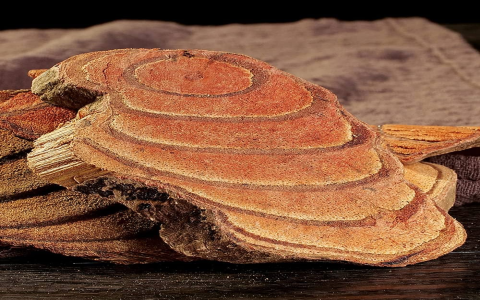Okay, here’s my take on sharing my experience with Spatholobus suberectus (aka Chicken Blood Vine, aka 鸡血藤) – think of it as a practical diary entry rather than a scientific paper.
So, I got curious about 鸡血藤 – I’d heard whispers about its supposed benefits for circulation and easing joint pain, all that good stuff. Figured I’d give it a shot, see if it lived up to the hype.
First thing I did was track down some decent-looking vine. Went to a local herbal medicine shop – the kind where you can smell the earthy, kinda musty aroma from a mile away. Talked to the guy behind the counter, an older gentleman with a knowing twinkle in his eye. He showed me a few different grades of 鸡血藤, explained the difference in thickness and color, supposedly indicators of potency. Ended up buying a bundle of the thicker, darker stuff. Cost me around $20.
Next step: prep work. The vine came in dried, kinda gnarly-looking chunks. I rinsed it thoroughly under cold water to get rid of any dirt or dust. Then I chopped it into smaller, more manageable pieces – about an inch or two long. This made it easier to work with when brewing a decoction later on.

My initial plan was to make a simple decoction. I threw a handful of the chopped 鸡血藤 into a pot, covered it with about four cups of water, and brought it to a boil. Once it was bubbling away, I reduced the heat to a simmer and let it cook for about an hour. The water gradually turned a reddish-brown color – hence the “chicken blood” name, I guess. The aroma was…interesting. Earthy, slightly woody, with a hint of something vaguely medicinal.
After an hour, I strained the liquid through a fine-mesh sieve to remove all the bits of vine. The resulting brew was a murky, reddish-brown concoction. I let it cool slightly before taking a tentative sip.
Okay, taste-wise…it wasn’t exactly a party in my mouth. It was bitter, definitely bitter, with that earthy undertone. Not unbearable, but not something I’d crave. I decided to add a little honey to sweeten it up, which helped considerably.
I started drinking about a cup of this decoction every day, usually in the evening. I kept at it for about a month. Did I notice any miraculous changes? Not really. Maybe a slight improvement in my circulation, especially in my hands and feet, which tend to get cold easily. But nothing dramatic.

Then I tried a different approach. Instead of just drinking the decoction, I started adding the 鸡血藤 to my bathwater. I’d basically make a double-strength decoction, then pour it into the tub while the water was running. Soaking in that reddish-brown water for about 20-30 minutes was actually quite relaxing. And I did notice that my muscles felt a bit looser and less tense afterwards. Could’ve been the hot water, could’ve been the 鸡血藤 – who knows?
Finally, I experimented by using it in a stew. I added some of the 鸡血藤 pieces to a chicken and mushroom stew I was making. It imparted a subtle, earthy flavor to the stew. Not overpowering, but definitely noticeable. I can’t say it added any specific health benefits, but it did make for a more interesting meal.
My Conclusion
So, after a few months of playing around with 鸡血藤, here’s what I’ve gathered: it’s not a magic bullet. Don’t expect it to cure all your ailments overnight. But it might offer some subtle benefits, particularly for circulation and muscle relaxation. The taste isn’t great on its own, but it can be improved with honey or incorporated into other dishes. And hey, soaking in a 鸡血藤 bath is a pretty decent way to unwind after a long day.
Would I recommend it? If you’re curious and willing to experiment, sure. Just don’t expect miracles. And always, always talk to your doctor or a qualified herbalist before trying any new herbal remedy, especially if you have any underlying health conditions or are taking medications.

That’s my 鸡血藤 adventure. Hope it was helpful! Maybe I’ll try something else next month and share the results.



